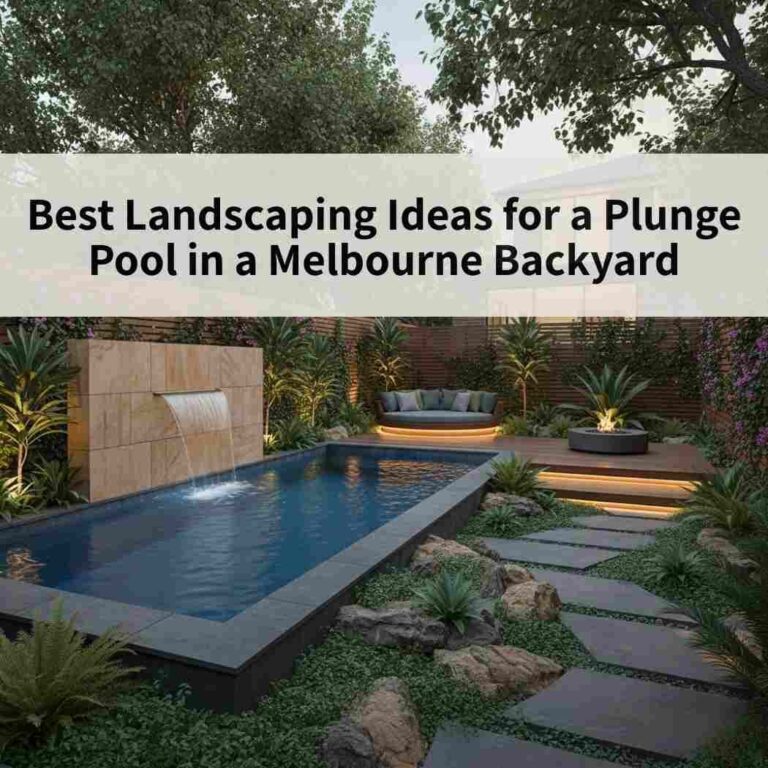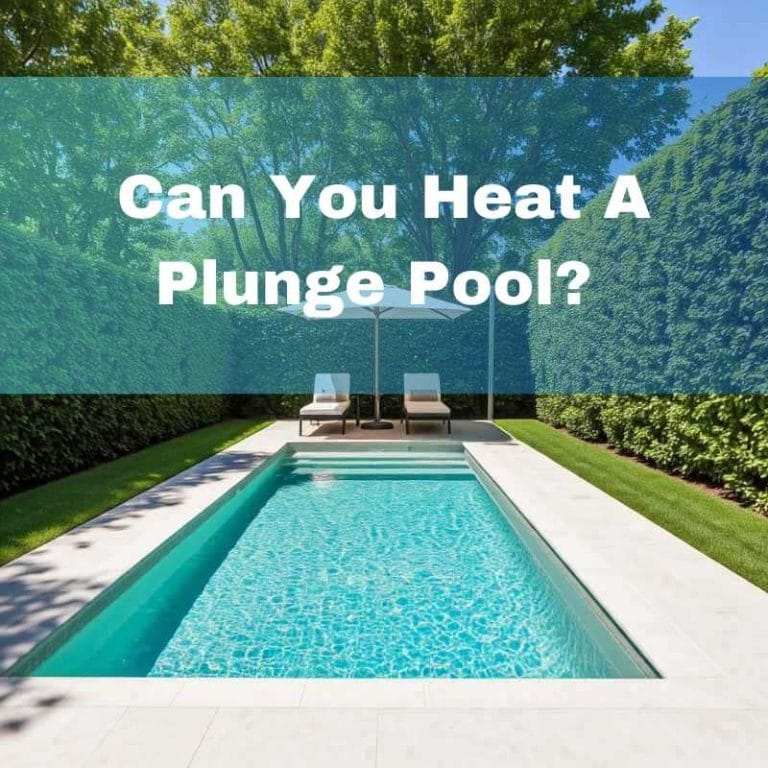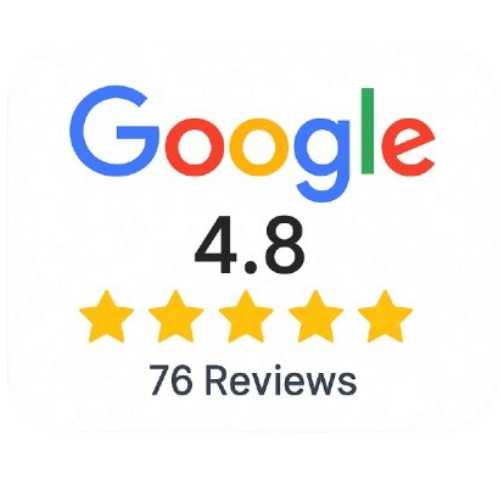At Plunge Pools Melbourne, we’ve helped hundreds of families find the right pool for their backyard and lifestyle — not just the cheapest option. We know that not every pool suits every home, and we’re here to make sure your investment feels like an upgrade, not a regret.
In this guide, we’ll break down the real disadvantages of above-ground pools — so you can plan smarter, avoid unexpected surprises, and find the right fit for your Melbourne home. Let’s get into it!
Table of Contents
ToggleWhat are Above-Ground Pools?
Above-ground pools are prefabricated pools that sit on the ground’s surface, usually made from vinyl, metal, or fiberglass. They’re popular because they’re easy to install and cheaper upfront than in-ground pools. But despite these advantages, above-ground pools have some serious drawbacks that potential buyers should think about.
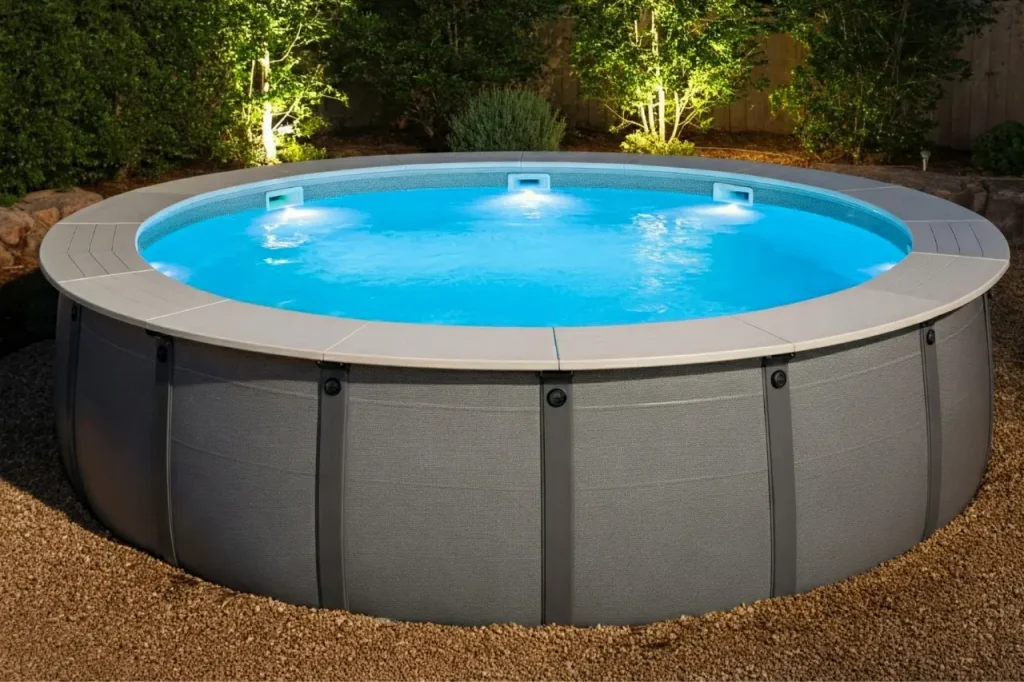
Disadvantages of Above-Ground Pools
1. Visual Appeal Concerns
Above-ground pools can be a bit of an eyesore compared to in-ground pools. They stick out like a sore thumb and can be hard to blend into your yard’s landscape. Sure, modern designs offer some cool styles and shapes, but they still can’t match the sleek look of in-ground pools. However, with some creative landscaping and decking, you can make it work.
2. Limited Design Options
Above-ground pools don’t offer as many design options as in-ground pools. They’re usually limited in shape and size, which means less customisation. If you’re after a personalised pool experience or a bigger swimming area, this might be a drawback.
3. Landscape Integration Challenges
Getting an above-ground pool to fit in with your landscape can be tricky. You might need extra decking or fencing to make it look cohesive, which adds to the cost and complexity of installation.
4. Perceived Value Issues
Above-ground pools are often seen as temporary or less desirable than in-ground pools. This can affect how potential buyers view your property’s value if you decide to sell your home in the future. So, keep that in mind when making your decision!
5. Privacy Concerns
Since above-ground pools are elevated, they can be more visible from neighboring properties, potentially reducing privacy. High fences or surrounding structures can help address this issue, but they may add to the overall cost.
6. Durability and Longevity Issues
Above-ground pools generally don’t last as long as in-ground pools. They’re made from materials like vinyl and metal, which aren’t as tough as what’s used for in-ground pools.
7. Material Vulnerability
Vinyl liners in above-ground pools are quite vulnerable to weather changes and UV damage, which can eventually cause leaks or structural problems. But if you go with more durable materials like fibreglass or concrete, your pool will generally last longer and stand up much better against the elements—meaning fewer repairs and more years of enjoyment.
8. Liner Damage Risks
Above-ground pools are more likely to have liner damage because they’re exposed to sunlight and weather. Regular checks and maintenance are crucial to prevent this.
9. Structural Weakness Points
Above-ground pools can have structural weaknesses, especially if they’re not installed right. Uneven ground or poor support can make them unstable and prone to collapse in bad weather.
10. Shortened Lifespan
Above-ground pools need to be replaced more often than in-ground pools. Some might last up to 10 years, but many need replacing after just 3 to 5 years, depending on quality and maintenance. So, factor that into your budget!
11. Replacement Frequency and Costs
The need to replace above-ground pools frequently can really blow out the long-term costs. Make sure you factor this into your budget when considering one.
Practical and Functional Limitations
Above-ground pools have some practical limitations that can affect how you use them.
Size and Depth Restrictions
Above-ground pools are generally smaller and shallower than in-ground pools. This means you can’t do things like diving or deep-water swimming.
Installation and Site Preparation
While above-ground pools are easier to install than in-ground pools, they still need a level surface. Dealing with uneven ground can be a hassle and might require extra work.
Before choosing your site, make sure you know the mistakes to avoid when choosing a site for your above-ground pool to prevent costly placement problems later.
Weather and Climate Vulnerabilities
Above-ground pools are more exposed to the elements, which can affect the water temperature. They might cool down quickly, so you might need heating solutions to use them for longer.
Stability Concerns
The stability of above-ground pools can be compromised by uneven ground or poor support. This can lead to structural issues if not sorted.
Maintenance Challenges
While above-ground pools are generally easier to maintain than in-ground pools, they still need regular cleaning and maintenance. The vinyl liner needs careful handling to avoid tears or punctures.
Financial and Value Considerations
Above-ground pools have some financial implications you should think about.
Property Value Impact
In-ground pools can boost your property’s value, but above-ground pools might not have the same effect. In fact, some buyers might see them as liabilities rather than assets. So, keep that in mind!
Hidden and Ongoing Costs
Beyond the initial cost and installation, above-ground pools come with ongoing expenses like maintenance, repairs, and frequent replacements. Make sure you factor these into your long-term budget, mate!
Insurance Implications
Having an above-ground pool can affect your insurance premiums because they’re seen as a safety risk. Check with your insurer to understand the implications. Don’t get caught out!
Limited Return on Investment
Given their shorter lifespan and potential negative impact on property value, above-ground pools might not offer a strong return on investment compared to in-ground pools. Think about it before you dive in!
Regulatory and Compliance Expenses
While above-ground pools generally need fewer permits than in-ground pools, there might still be regulatory costs to consider, especially if you’re installing fencing or other safety features. Don’t forget to budget for these extras!
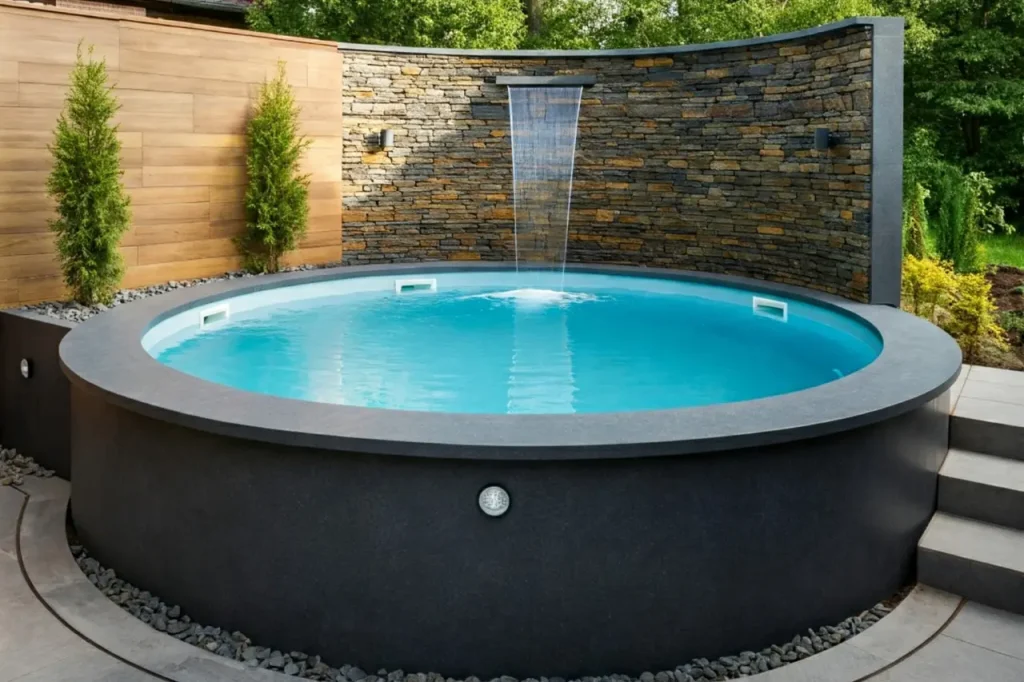
Conclusion
Above-ground pools are a convenient and budget-friendly way to enjoy a swim without breaking the bank on in-ground pools. But, they’ve got some downsides: aesthetic limitations, durability concerns, practical restrictions, and financial implications. Knowing these factors will help you decide if an above-ground pool is right for your Melbourne home.
Ready to install your pool? Explore our affordable and durable above-ground plunge pool options designed for Melbourne homes, and find the perfect fit for your backyard.
People Also Ask
How long do above-ground pools typically last?
Above-ground pools usually lasts 20 years or more, depending on the quality and how well you look after them. High-quality models might go longer, but replacements are common due to material wear and structural weaknesses.
Do above-ground pools decrease property value?
Above-ground pools might not boost your property’s value like in-ground pools do. In fact, some buyers might see them as liabilities, which can negatively impact resale value. So, keep that in mind!
Can above-ground pools be made to look more attractive?
Yeah, you can make above-ground pools look better with some clever landscaping, decking, and surrounding features. But, they still might not have that sleek, integrated look of in-ground pools.
What are the most common maintenance issues with above-ground pools?
Common maintenance issues include cleaning, checking the filtration system, managing water chemistry, and preventing liner damage. Regular checks are crucial to prevent structural problems. Don’t slack off on this!
Are above-ground pools safe for children?
Above-ground pools can be safer than in-ground pools because they’re elevated, which reduces the risk of accidental falls. But, safety features like removable ladders and fencing are essential to keep kids from getting in unsupervised. So, make sure you’ve got these sorted!

